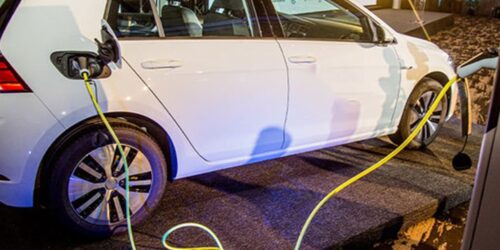Having big dreams is sexy, but only if there is a plan working quietly in the background to realize them. That’s true for life. It is also true for government policies. Since the PTI government came into power, there have been a few dreams that seem too gargantuan for their own good—5 million houses, 10 million jobs, 30 percent electric vehicles and so on. While there is planning in place slowly materializing, whether or not it is sufficient to combat all the associated risks may be all together another thing.
Take electric vehicles. There is an EV policy that has been in the works for a while. In the current budget, the government has ended the tax on import of CKD units for the local manufacturing of electric vehicles. The sales tax on them has been reduced down to 1 percent (from 17%) while value-added tax on imported electric cars and CKD kits has been slashed to zero, in addition to removing the Federal Excise Duty (FED) on 4-wheeler EVs. Great incentives.
What’s the problem? The problem is fiscal incentives do not a policy make. The current policy is so focused on creating supply for EVs and attracting local manufacturing, it has almost forgotten the demand-side of the equation. Will folks actually buy these EVs? In fact, there are considerations beyond the capital cost of procuring the EV which by no measure—despite the incentives—can compete with the current cost of vehicles run on internal combustion engine (ICE).
The first is charging infrastructure which suffers from a classic chicken and egg problem. Investment in charging infrastructure only makes sense if there are enough EVs on the roads, while EVs only make commercial sense if there is existing and developing charging infrastructure because consumers will not buy an electric vehicle if there are no chargers around. The phenomenon is called “range anxiety” or in this case “charge anxiety”, specifically, the dual fear that the vehicle will not be able to run the number of kilometers to complete the journey, on top of the apprehension that if it stops, there won’t be a charging place nearby.
In fact, to alleviate this problem, globally, incentives have been provided to promote “bridge” technology like hybrid EVs or plug-in hybrid EVs which provide switching to petrol if/when the battery drains out. That is not to say, this government should just dole out incentives to all and sundry, because there are pros and cons for promoting these technologies as well (read more: “Hybrid thoughts”, Mar 11, 2021). But the point is to sit back and think again on how to approach this.
India was on the way to an EV revolution but over time, as the new technology was introduced, new problems emerged. Investors in charging infrastructure in India soon recognized that international standards could not be simply copied for the Indian market and had to be tailored. There are trust issues amongst Indian EV users who are not always sure whether the ports are actually charging their vehicles, or who are suspicious of the quality of the electricity supplied from the grid, as power fluctuations from grid to port are common in India.
As a result, charging companies are now introducing stabilizers (something unthought of anywhere else in the world) to supply uniform and efficient electricity to EVs. That is just one of many problems that the charging space is tackling. On this side of the border, the discussion is rudimentary. The thought-process is “let investors come”. But for a successful policy, Pakistan needs investors that will keep coming and will actually stay.
For one, the country may have excess power generation, but can it supply that to the charging stations? Are the power companies even involved in this dialogue as more CNG stations are transformed into EV charging places? There is a routine mention of “reliable power supply” but a country that has for decades failed to tackle the volatility in the power sector cannot just solve this problem by throwing incentives at investors.
A lot of folks have asserted that EV users can simply install solar panel technology in their homes to charge their EVs. But can every EV consumer really install a solar panel at home—and does that solve the charge anxiety issue over longer distance travels (read more: “The E in EV”, July 14, 2020) since EVs on full-charge only have half the range of the equivalent full-tank ICE vehicle. Meanwhile, whereas the maintenance cost of EVs is very low, battery life is typically 5 years which means, consumers have to replenish the battery pack after the 5-year mark with another major spending component, batteries being the most expensive part of an electric vehicle.
There is a certain disconnect between the level of our preparedness versus the ambitious target. Navigating the harsh waters of a new technology when the automobile market in the country is so underdeveloped is by no means an easy task for policymakers. But let’s have the oxygen tank ready before the leap, shall we?






